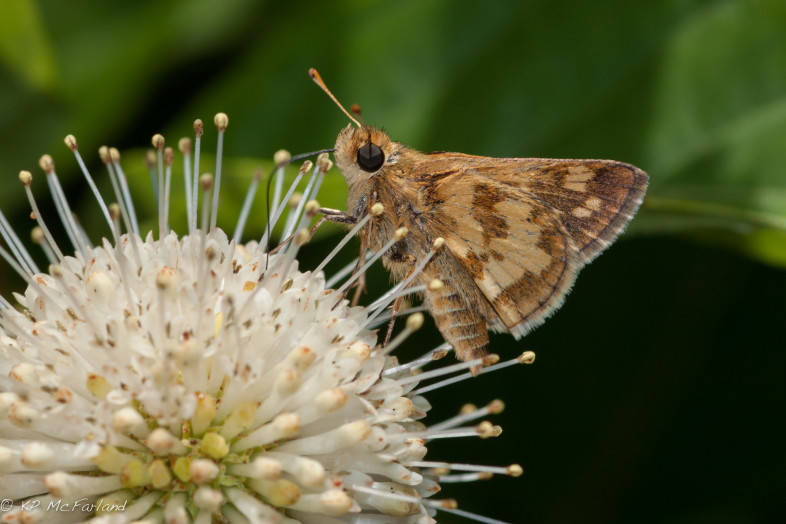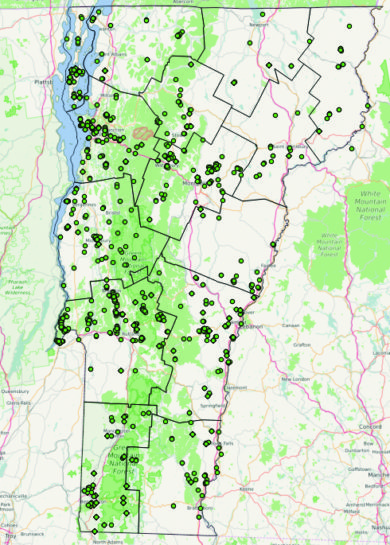Naturalists love a challenge. For years, birders have ardently (sometimes obsessively) racked up species via county or state lists, year lists, and Big Days. Recently, that trend has encompassed butterflies. In 2016, VCE challenged “lep” enthusiasts with the Vermont Butterfly Big Year.
Armed with digital cameras, iPhones, and e-Butterfly accounts, more than 100 citizen scientists scoured meadows, mountains, even their own backyards to document as many species of butterfly in as many locations as possible throughout Vermont. e-Butterfly, much like eBird, is an online checklist program that collects observer effort and exact location, allowing for more rigorous use of data for science and conservation. Our intrepid volunteers have managed to document 76 species and tally over 11,300 individual butterflies so far in 2016, making the inaugural Vermont Butterfly Big Year a huge success.
Butterfly action kicked off on March 27th with observations of Gray Comma, Mourning Cloak, and Milbert’s Tortoiseshell flying on a warm spring day. And the last butterfly (so far!), was a Clouded Sulphur found on a warm mid November day. These can sometimes be found almost into December on sunny, warm days.
Terri Armata led all volunteers by documenting 67 species, mostly in southwestern Vermont, one of the state’s butterfly hotspots. David Hoag, VCE’s 2013 Julie Nicholson Citizen Science Award recipient, recorded 51 species in the Champlain Islands, and Sue Elliott, who shared the award with her husband Marv in 2014, found 46 species.
The Big Year featured a blend of science, education, competition, and a quest to help monitor the state’s changing nature. Climate change, invasive species, habitat loss, and other environmental factors are altering Vermont’s biological diversity, but with volunteers submitting their observations statewide, VCE can examine what these changes might mean for butterflies.
In the decade since the Vermont Butterfly Survey (VBS)—the state’s first-ever, six-year atlas of butterfly diversity—some species’ ranges have seen dramatic change. Wild Indigo Duskywings, found only in southern Vermont during VBS, have redrawn their range map and now inhabit the entire state. A warming Vermont and the addition of Crown Vetch to their palate has led them steadily northward. They’re not alone. Common Sootywing, Giant Swallowtail—a recent southern arrival to the state—and others appear to be marching slowly northward. Thanks to the help of enthusiastic citizen scientists and tools like e-Butterfly, we can now accurately track Vermont’s butterflies.


